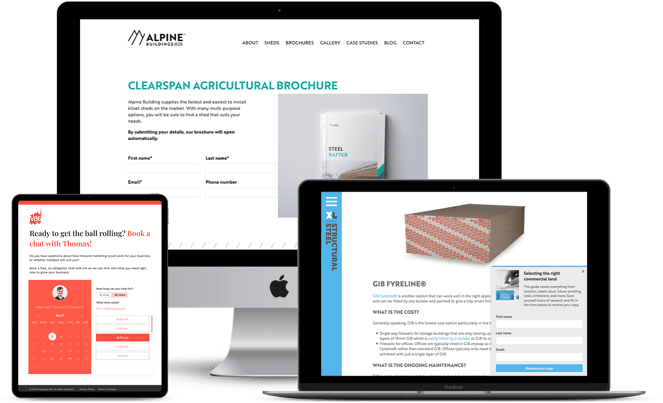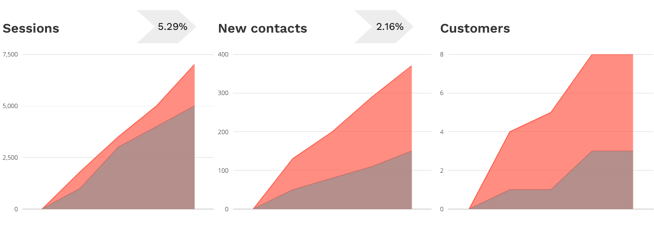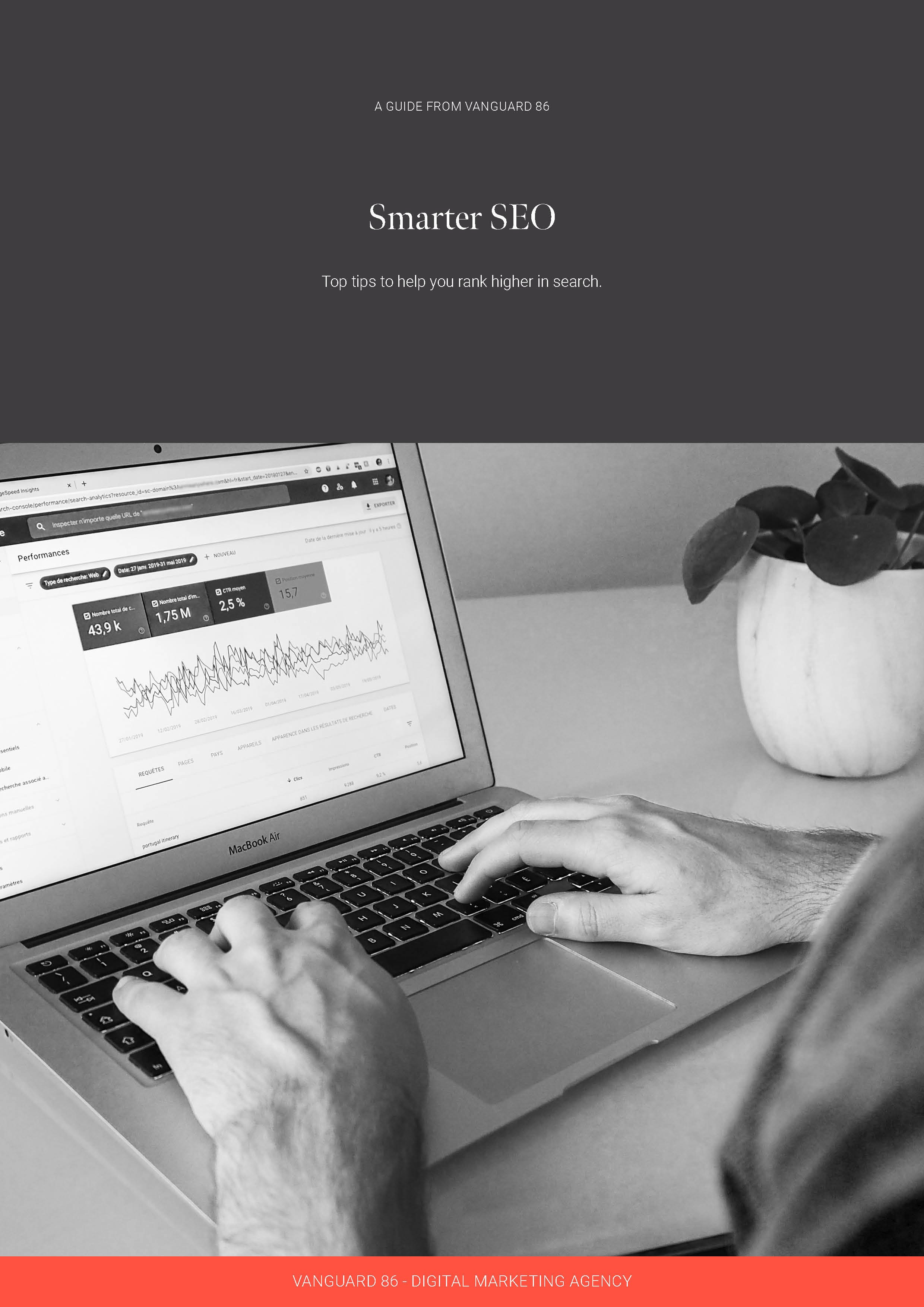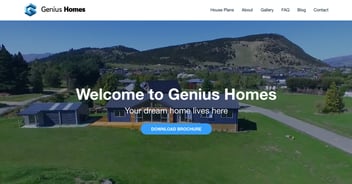How to increase your website conversion rate
You have a website and no doubt invested in it with the aim of bringing in enquiries or leads for your business. "Build it and they will come" you said to yourself. Well, you built it and where are the leads?
Assuming your website is technically functioning as it should, you can expect it to be generating some website traffic. But simply having visitors to your website doesn’t equate to ‘conversions’, or people taking action. Increasing your website’s conversion rate is a crucial success metric for any business. Not only does it communicate to search engines that the contents of your website are valuable enough to make visitors take action but it also increases your database size, giving you more contacts to market to and generates quality leads for your sales team.
What are the different types of website conversions?

Firstly we've got to define what a conversion is for your business. If you only view a website conversion as a direct sale and your business isn't TradeMe, Mighty Ape, K-Mart, or any other pure e-commerce site then you need to adjust your expectations.
There are 3 levels of conversion for most businesses, especially service level businesses:
- Top of the funnel (TOFU)
- Middle of the funnel (MOFU)
- Bottom of the funnel (BOFU)
Each level is an indicator of how close someone is to buying, with top of the funnel being the farthest away and bottom of the funnel being a quote request/booking/RFP. So what’s likely to exist at each stage as a conversion point?
- TOFU - Download a ‘How to’ guide, brochure or info pack.
- MOFU - Book a factory tour, product demo or a detailed pricing guide.
- BOFU - Book a chat with a sales representative or enquire about a product.
What’s the benefit of adding website conversion points?

As we’ve mentioned, a conversion doesn’t always mean a sale. However, adding conversion points to your website can eventually result in more sales. Let’s look at how.
By offering content that caters to all three levels (or stages of the buying journey) and hiding/gating these content offers behind a form will help you get more contacts on your database, which you can then market to and nurture towards becoming a customer.
In addition, conversion points can help you learn more about your potential customers. They provide insight into real user behaviour across your site, i.e. how users navigate your website, which messaging treatment is more likely to resonate with them, what content users typically gravitate to on your website, and more. This benefit goes hand-in-hand with the potential to increase sales.
As the content becomes more valuable to a visitor they’re willing to offer more in return. Things like a brochure might not elicit more than a first name and email address but a 7-day trial or site visit might encourage someone to give more information in return.
Website conversion best practice

Keep it simple
Aim to have a conversion opportunity on every website page. But don't overwhelm users with too many! A clean and uncluttered website experience is key. Many businesses believe that offering the visitor many different options early in the website experience means they can quickly find what they're after, in reality that can be the opposite as visitors are overwhelmed with numerous irrelevant options.
Use pop-up forms wisely
While the use of pop-up forms can be a valuable website conversion tool, add too many and you’ll create a bad user experience. Pop-ups can be quite intrusive so it’s important to set them up to trigger at the perfect time, otherwise you risk driving visitors away from your website.
Making your pop-ups function around user intent is often the best way to go. If a customer has the intent of leaving your site, you could trigger a pop-up with a content offer before they exit out - this will give you a conversion and capture their details so you can market to them in the future. Likewise, if you’re trying to convince visitors to read more content, a scroll-triggered pop-up on a blog post would be effective. The pop-up could trigger after they have scrolled at least 50% of the page and could be a newsletter subscription form which would give them access to your latest blog posts and related content.
It’s also vital to optimise your pop-ups for mobile. If your pop-ups appear obstructive or poorly designed for mobile, Google will penalise you. Optimise pop-ups for mobile screen dimensions and ensure there’s a clear exit route from the pop-up (for example, a cross on the upper right corner), or to avoid that all together turn off your pop-ups on smaller devices.
Optimise forms
When gating content offers, the form needs to be appropriate for the content and stage of the funnel the user is at. Too short and your form won't give you enough data to know if that lead should be contacted, too long and you'll scare most prospects away.
Take this as an example:
You want to download a company’s product brochure but the form is 50 questions long and includes asking what your income is, your parent's occupation, and what you had for breakfast. Would you bother? Probably not.
Now let's try this on for size:
The same 50 questions, same level of private enquiry but if you complete the form you'll be given $5,000 completely free. Now would you fill in the form?
You've got to view every form on your website as a trade. The user gives you information and data and in return you're expected to give something of equal or greater value.
How to start adding website conversion points
The first step you’ll need to take to start adding website conversion points is to map out the content you already have. You’ll likely have documents the sales team use like print brochures and more that can all be turned into downloadable content. From here, you can begin creating landing pages to gate the content and thus creating conversion points.
These landing pages will request basic (or more in-depth) personal information from the visitor in return for your content that is of equal perceived value. You can request information such as name and email address for the more basic content offers, through to more high-value information such as region, phone number, and budget for premium content (such as a price list or expert guide).
Fundamentally, increasing the conversion points on your website will result in an increased website conversion rate which will increase the number of leads your sales team has. Download our comprehensive guide to generating more leads where we go into greater detail and offer specific advice on how to craft landing pages, forms, and calls to action that will help you increase your website conversion rate ever further.
Download your free guide to Smarter SEO
Good SEO can mean the difference between your business being found, or you being lost in the growing mass of online resources. This guide is designed to help you rise above your competition.
Download now





